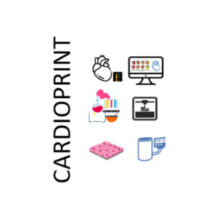Projects
Projects at a Glance
OPTOMETAMAG - Optical-control of thermally driven magnetic phase transitions in metamaterials
The project aims at developing hybrid systems combining the ultralow energy, speed, and control of plasmonic opto-heating with the unique property of nanoscale graded magnetic metamaterials to display magnetic phase transitions across precisely engineered critical temperatures.
QMOLESR - Addressing molecular spin qubits by ESR-STM
The emergence of ESR-STM has recently opened new perspectives on the coherent manipulation of individual spin qubits. However, to date ESR-STM experiments are essentially focused on individual magnetic atoms deposited on MgO/Ag(100). The insulating layer of MgO seems to be an essential ingredient to obtain addressable and functional single atom qubits, e.g. to fix the spin along certain directions and enable ways for its manipulation. The aim of this project is to go beyond the current restriction of ESR-STM on individual atomic qubits on MgO layers and expand its usage towards robust qubits in other environments. This will be done by using metallo-organic complexes whose organic structure is designed in such a way to play the role of the MgO layer. ESR will be performed on individual magnetic molecules and their potential as molecular spin qubits in contact with metals will be probed. The overall methodology of the project is divided into three main objectives: (1) demonstrate ESR-STM on magnetic molecules; (2) demonstrate ESR-STM on magnetic molecules in direct contact with a metallic substrate and use molecules as magnetic sensors; (3) protection of spin coherence by superconductivity. The impact of the project goes beyond the purely scientific interest and it extends to the industrial sectors of technology and telecommunications. This is because it actually opens the possibility of implementing spintronic devices aimed at storage and manipulation of quantum information in which the individual qubits can be concretely addressed thanks to some type of electrode. Moreover, the coherent control of quantum states is currently under large demand in Europe. In this regard, the highly specialized expertise acquired by the researcher thanks to this project will clearly be an added value in the preparation of his future career. In conjunction with its scientific aim, QMOLESR is designed to train an excellent, independent researcher who will develop his research career.
LSD - Low-dimensional Spin Devices
This project explored materials and architectures with low dimensionality and symmetry to develop spintronic devices. We created structures based on van der Waals materials or quiral materias in order to study the effect of symmetry breaking on the materials’ spin properties.
Functional Nano-Scaffolds for Regenerative Medicine PhD programme
The mission of NanoReMedi is to define a joint doctorate educational training model in Functional Nano-Scaffolds for Regenerative Medicine where Academia and Industry join their forces to create a highly innovative research network for training a new generation of researchers who will enter the area of nanoscience from adjacent disciplines (such as chemistry, material sciences and bioinformatics) establish a solid framework for long-term research cooperation between a pool of leading Universities and Enterprises build a solid foundation for long-term European excellence in medical nanotechnology.
HiMat - Hybrid layered materials for next generation electronics
HiMat focuses on the development of hybrid layered materials (HLMs) with tailored physical properties and their integration in lab-scale devices for opto- and spin- electronics or quantum computing. By taking advantage from the chemical flexibility of organic molecules, HiMat explores tailored HLMs obtained through a top-down approach as intercalated compounds and through a bottom-up approach as organic-inorganic metal-halide perovskites.
Tellurium-Free Thermoelectric Modules by Interface Engineering
Tellurium-Free Thermoelectric Modules by Interface Engineering - THERMOS
NANOSPEC - Advanced near-field optical nanospectroscopy and novel applications in material sciences and nanophotonics
The objectives of the project include establishing correlative nano-FTIR, TERS, and TEPL spectroscopy, studying industrially relevant polymers, exploring organic conductors' conductivity, and investigating phonon polaritons in 2D materials. The project targets developing advanced near-field spectroscopy instrumentation and achieving vibrational strong coupling in nanoresonators and molecular vibrations.
CARDIOPRINT - Advanced multifunction 3D biofabrication for the generation of computationally modelled human-scale therapeutic cardiac tissues
CARDIOPRINT is born with the ambition of shaping a quantum leap in the fields of Additive Manufacturing and Biofabrication of therapeutic human cardiac tissues, at both the technological and applicative levels. The overall concept of this enterprising project is to develop a new multifunctional additive manufacturing technology able to provide the sufficient accuracy for the manufacturing of human tissues at an organ scale for the first time.
By funding program
Contact

Yurdana Castelruiz
Projects Manager
+ 34 943574022
y.castelruiz[at]nanogune.eu




